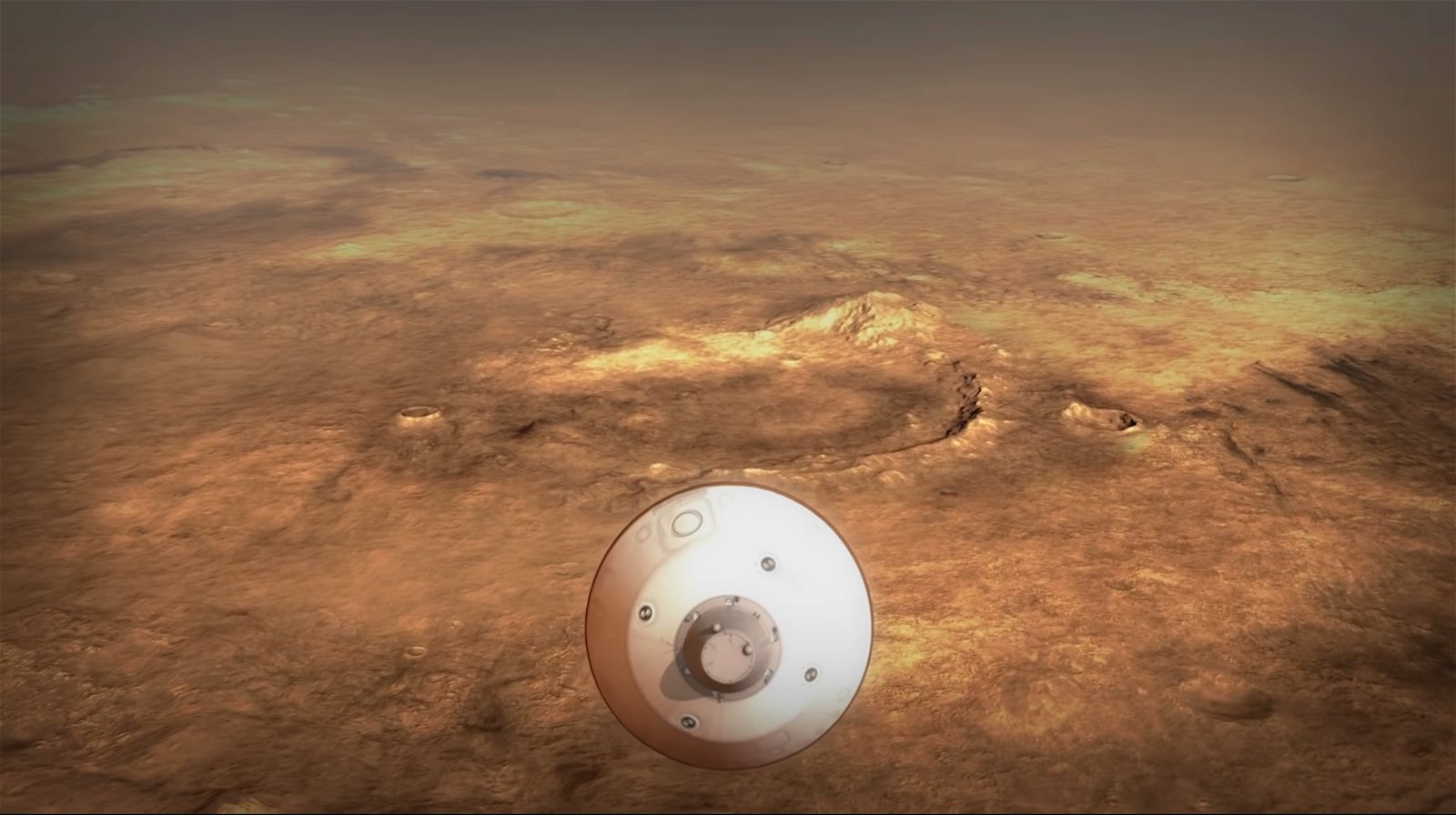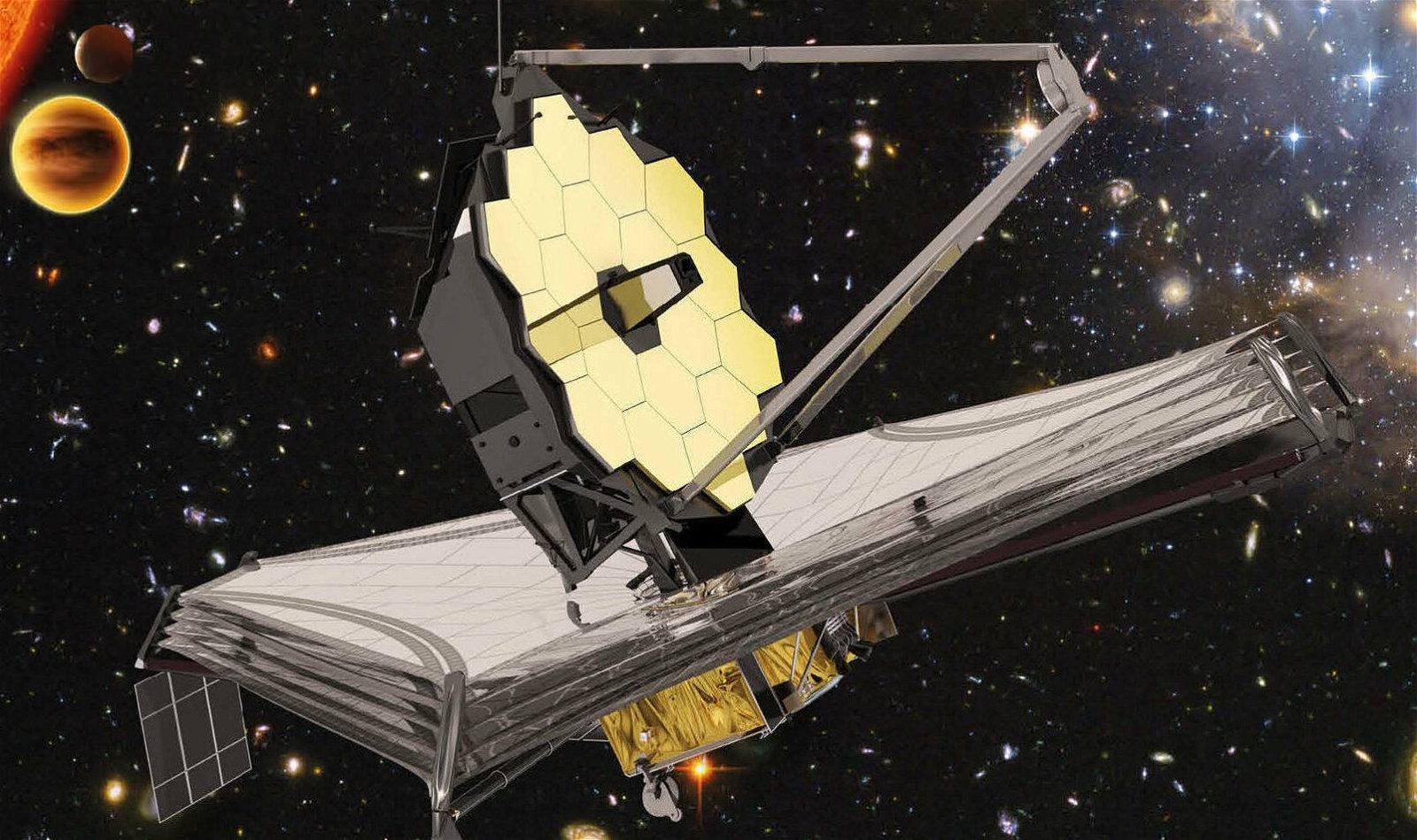

Welcome to your weekly Intelligence Brief. In our roundup this time are 1) software updates being sent to NASA’s robots on Mars, 2) how some scientists are proposing novel ways of searching for evidence of intelligent extraterrestrials, and 3) why the telescopes of tomorrow may be gamechangers in the search for extraterrestrial intelligence.
Before we begin, a few items we’ve been looking at over at The Debrief this week include DARPA recently awarding $22 million to San Diego-based General Atomics to design a mini nuclear reactor for space propulsion, why China is closing in on drone supremacy, and also several updates on UFOs, both past and present. We’ll have a full listing of recent stories at the end of this newsletter… and with that out of the way, let’s turn our attention back toward Mars, and the ongoing efforts to find evidence of life on Earth’s nearby planetary neighbor.
Even Robots on Mars Get Software Updates
As the Perseverance Mars Rover continues its mission in search of evidence of life on the Red Planet, minor setbacks have occurred in recent days as NASA prepares for the launch of the Ingenuity helicopter. According to a recent statement from the space agency, a software issue was identified and will soon be corrected in a forthcoming update; that’s right, even robots we put on Mars require software updates.


“The Ingenuity team has identified a software solution for the command sequence issue identified on Sol 49 (April 9) during a planned high-speed spin-up test of the helicopter’s rotors,” read a NASA statement. Last weekend, it was reported that the Perseverance team had been conducting tests to identify the best and most efficient resolution to the issue. Among possible solutions had been modifications and reinstallation of the flight control software used by the Martian helicopter, which NASA has now decided to implement.
According to the engineering team at Pasadena’s Jet Propulsion Laboratory (JPL), the forthcoming software update aims to modify the boot-up configuration for the helicopter’s flight control system, with tests currently underway at JPL to review the proposed modifications.
According to the JPL team, creating the software update for Ingenuity isn’t the hard part: it’s making sure it can be uploaded that requires planning, and plenty of time. While the software update is being instituted, Ingenuity’s much anticipated first flight will remain on hold, as the JPL team institutes “careful and deliberate steps to move the new software through the rover to the base station and then to the helicopter.”
Presently, NASA has identified a number of milestones on the path toward liftoff, where it hopes to identify what caused the issue in the first place. This, in addition to the development and uploading of the aforementioned software update. “Once we have passed these milestones, we will prepare Ingenuity for its first flight, which will take several sols, or Mars days,” a NASA statement read. The JPL team estimates that a new prospective flight date for Ingenuity will be established by next week.
“We are confident in the team’s ability to work through this challenge and prepare for Ingenuity’s historic first controlled powered flight on another planet,” read the joint NASA/JPL statement.
Despite the setbacks, Ingenuity’s power and communications systems remain online and functional, and in fact, NASA says that a few minor issues like those currently being addressed are to be expected. In the meantime, Perseverance continues to engage in scientific studies within the Jezero crater as it looks for possible signs of life that might have once existed on Mars.
Other Signs of Life: Technosignatures and Space Wreckage
Although Perseverance’s mission may be among the most ambitious efforts to find evidence of life on other worlds currently underway, sending robotic probes to find evidence of past or present microbial life is only one method scientists have proposed for finding evidence of extraterrestrials. Other possibilities that have been proposed in recent days involve searches for technological remnants of past intelligent civilizations, or even evidence of extraterrestrial activity that might currently detectable around nearby planets.
A recent NASA-funded paper outlined a number of innovative strategies astronomers might begin to employ in the search for technosignatures of extraterrestrial civilizations, which even included scouring planets like Mars and Mercury, as well as the moons of these planets (and our own) for evidence of crashed probes or other technologies.
Talking recently with Jacob Haqq-Misra, Senior Research Investigator at Blue Marble Space
Institute of Science and one of the recent paper’s coauthors, I asked him about whether searching for technosignatures on nearby planets—or even Earth’s moon—seemed like a worthwhile idea.
“We will not know until we look,” Haqq Misra said, adding that among those who have advocated the idea had been his colleague Daniel Angerhausen, who presented a poster at TechnoClimes a while back “about his ongoing research to use machine learning to search for anomalies in high-resolution lunar surface data.”
“Mars is another good place to search for surface artifacts,” Haqq-Misra says. “Likewise we could look in the asteroid belt for evidence of mining by extraterrestrial visitors.”


Other possible strategies include more traditional methods involving telescopes to conduct searches for extraterrestrial civilizations. However, with the advanced telescopes we can expect to see in the years ahead, it is also likely that there will be significant improvements in their ability to detect possible evidence of alien technologies.
Technosignatures and the Telescopes of Tomorrow
“The best telescopes being considered that could search for some technosignaturesare mission concepts that are currently being studied by NASA, such as LUVOIR and the Origins Space Telescope,” Haqq-Misra told The Debrief. “ESA also has a mission concept known as LIFE that could search for technosignatures. Our paper describes ideal missions for technosignature-focused observations, but I doubt there will be a mission any time soon that is dedicated to searching for technosignatures.”


“The James Webb Telescope might be able to characterize the atmosphere of one or two nearby systems,” Haqq Misra adds, “so this could be one of the first attempts to search for biosignatures and technosignatures. However, the best missions are the concepts currently under study like LUVOIR and Origins, which would not launch for about 20 years.”
Haqq Misra also told us that there are ways growth in the private sector could benefit astronmer’s searches for technosignatures. As an example, he cited the Breakthrough Listen initiative as an example.
“But even commercial space exploration could provide indirect benefits,” Haqq Misra told The Debrief, “as the demand for a space-trained workforce will lead to more graduates in astronomy and planetary science, which could also help to increase overall awareness and interest in technosignature science.”
That concludes this week’s edition of The Intelligence Brief. Don’t forget to subscribe and get email updates from us here, or read past editions of The Intelligence Brief at our website. And as always, if you have a tip or other information you’d like to send along directly to me, you can email me at micah [@] the debrief.org.


Meanwhile, here are the top stories we’re covering right now…
- Chinese Lab-Leak Origin For COVID-19 Possible, Say Top Intelligence Officials
During Wednesday’s open-hearing on Current Worldwide Threats, America’s top intelligence officials said they have not ruled out the possibility that COVID-19 originated from a lab-leak in Wuhan, China.
- The Foo Fighters: Today’s Pilots Encounters with UAP Are Nothing New
What were the “Foo-Fighters” that American night-fighter crews encountered over Europe and the Pacific during World War II?
- Did You See What I Saw?: Discussing UFOs Can Be Difficult For Persons Of Color
People of all races encounter the UFO phenomenon, but does race influence whether a witness is believed? The everyday experiences of minorities suggest this is likely the case and ufology suffers for it.
- China has Achieved Total Global Drone Supremacy
UAV “Motherships,” owning the market share, and a global hold on technology. The Drone is the future and the Chinese are winning the war.
- Past Global Changes Horizons Magazine Targets Gen Z to Curb Fake Science News
Scientists and artists have joined forces to publish the online Past Global Changes Horizons magazine to fight spread of fake science news.
- New DRACO Program Will Use Nuclear Propulsion For Future Lunar Missions
DARPA recently awarded $22 million to San Diego-based General Atomics to design a mini nuclear reactor for space propulsion.
- Dunning-Kruger Effect: Ignorance and Overconfidence Affect Intuitive Thinking, New Study Says
In a newly published study, researchers say the Dunning-Kruger Effect can cause low-performers to overestimate their judgments during the intuitive decision-making process.
- You Need This Bullet (and Bomb!) Proof Flying Iron Man Suit
TV host Adam Savage revealed that he had developed a functional “Iron Man” suit created out of titanium. Oh, and it can fly.
- The Digital Passport Is The Future, And Apple is Leading the Charge
New patents filed by Apple show the company wants to make your IDs and passports digital, and stored on their devices
- Pentagon Confirms Leaked UFO Images Are Authentic
The Pentagon has confirmed that U.S. Navy personnel captured several leaked images and a video depicting unidentified aerial phenomena, or UAP.
- EmDrive Propulsion Inventor Defiant in Face of Failed Tests
University researchers recently said the EmDrive propulsion system would never work. The inventor of the drive says they screwed up.
